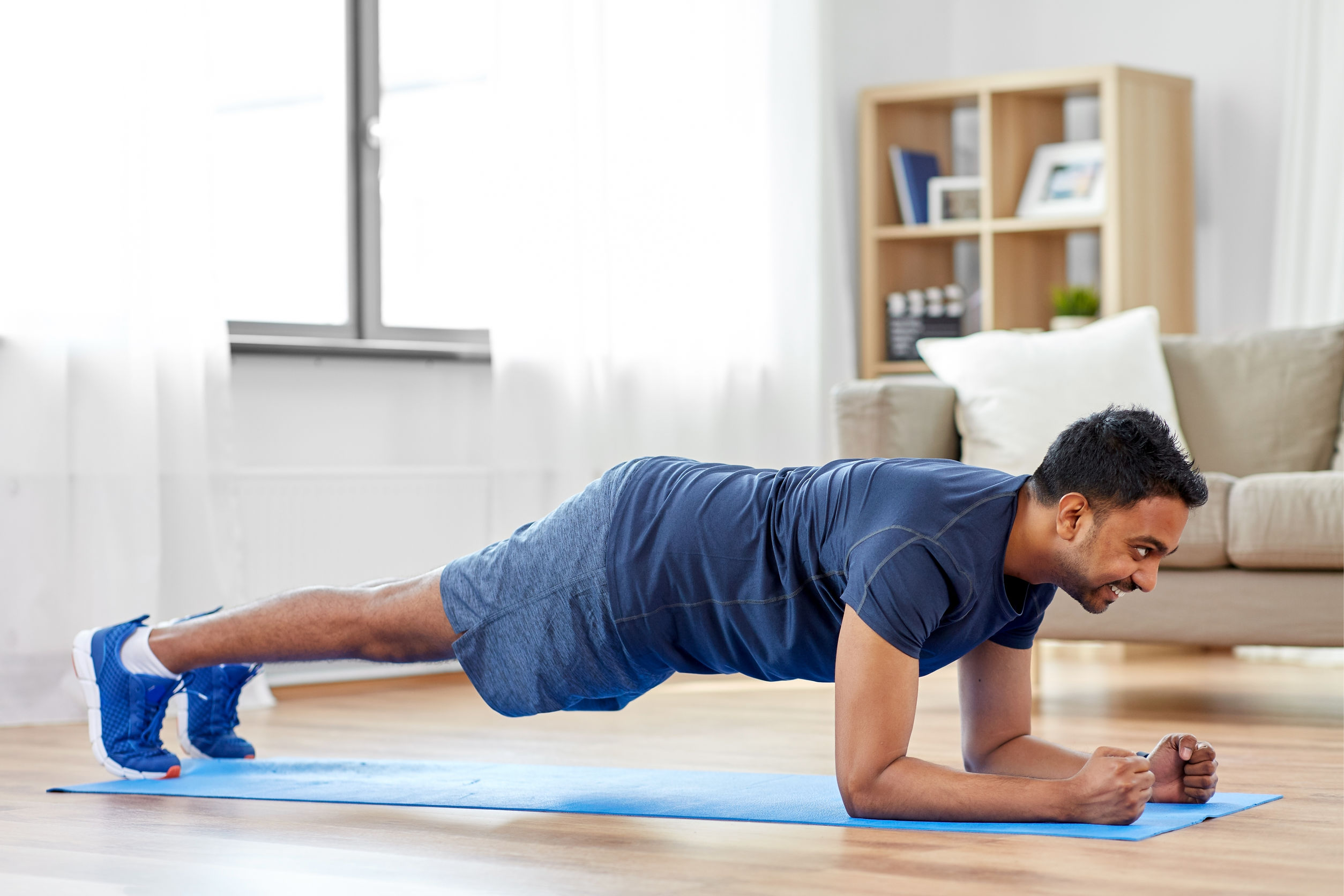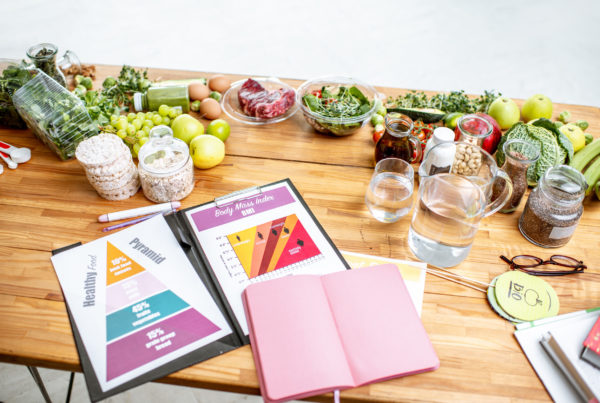”Georgia, do you have a hard time making it to the gym? The good news is, is that there are plenty of options for getting a good workout in at home. Check out this week's article for several ideas! Enjoy!
Reading time: 10 Minutes
MWi Hacks:
- Get more workout ideas and programs for at-home use
- Try a variety of work-out routines to stay motivated and engaged with your wellness
MWi Summary:
- There are a lot of ways to exercise without having to leave your home: yoga, bodyweight exercises, gardening, family walks, and more.
- Exercising at home allows for flexibility in terms of time and equipment.
- A daily commitment to movement can be good for physical and mental health.
Keep reading for information on 10 ways to exercise at home while under quarantine or lockdown.
1. Yoga
At a time of immense stress and uncertainty, the slow movement and controlled breathing of yoga can ease anxiety and help with physical tension. Try these simple yoga moves:
- Begin in Child’s Pose, with the knees bent under the chest and the torso and head down.
- Extend the legs out and push up onto the hands into Downward-facing Dog. The hips should be in the air so that the body forms an inverted V.
- Bring one leg forward between the hands, with the foot flat on the ground, the knee bent, and the hands either side of the foot.
- Raise the upper body and arms, straighten the back leg, and pivot the back foot at a 45-degree angle.
- Extend one arm behind the body and one arm in front of it. Stretch and breathe deeply.
- Repeat the entire sequence, switching sides.
Yoga is not just for adults. Parents and caregivers can teach even very young children yoga poses and practice with them.
For a more structured approach, try Cosmic Kids Yoga. This channel includes a range of videos in which a yoga instructor incorporates yoga poses into kid-friendly stories.
2. Bodyweight exercises
Bodyweight exercises offer many of the same benefits as expensive gym equipment. Try these simple exercises:
- Squats: Do 2–3 sets of squats, working up to progressively more repetitions and sets. Start by standing, and then drop the buttocks back and bend the knees into a sitting position. Some people find this exercise easier with a ball between their knees.
- Master the pushup: Novices can work up to this exercise by keeping their knees on the ground to begin, while pushup experts can try one-handed pushups.
- Cultivate strong abs by planking: Lie on the stomach, then push up onto the forearms with the elbows bent. Hold for at least 10 seconds and repeat. Work up to longer holds.
- Try lunges: Take a long step forward with one leg and bend both knees, ensuring that the front knee does not extend past the toes. Repeat on the other side. Reverse lunges, which begin with a step backward, and side lunges, which start with a step to one side, are easier for some people.
3. Weightlifting
Weightlifting does not require fancy gym equipment or even weights. If a person does not have weights, they can use heavy cans, books, or other weighty objects instead.
Try incorporating weights into a bodyweight exercise routine, squatting, and lunging with the weights in the hands. Alternatively, try bicep curls, shoulder presses, and tricep extensions.
To bench press with free weights, simply lie on the back and press the weights up, holding one in each hand. For a different shoulder exercise, try extending the arms out, down, and to the side after pressing the weights up.
4. Online exercise programs
Some people thrive with group support or feel unable to design an exercise program on their own. These online exercise programs may help:
- MommaStrong offers tailored exercises for mothers, including women in the immediate postpartum period who may have diastasis recti and other issues.
- Daily Burn offers a range of workouts for beginners, experts, and everyone in between.
- Gaia offers online yoga classes for every skill and experience level.
- Peloton offers video and audio-only outdoor workouts, as well as body weight and yoga classes.
Many local gyms and yoga studios have also converted to online programs. People who had already enrolled in a fitness program should inquire about these options.
5. Gardening
On facing the reality of spending weeks or even months at home, many people want to increase self-sufficiency. For those lucky enough to have a garden, gardening is a great way to grow healthful, uncontaminated produce. It also offers plenty of exercise.
From walking around the yard pruning flowers to digging deep holes for sweet potatoes, there are plenty of opportunities to get a workout.
To get the most out of gardening, a person should choose plants that they enjoy growing. Beginners may want to start with easy options, such as herbs and tomatoes.
Parents and caregivers of young children may be able to get their kids in on the act by giving them a hose and a bucket of dirt.
The kids will likely create a mess, but they will get a break from the tedium of indoor life, and it may allow parents and caregivers to enjoy some distraction-free gardening.
6. Outdoor sports
People who have a yard that offers 6 feet of distance from public areas, such as parks or sidewalks, can safely enjoy outdoor sports.
Try installing a badminton net in the backyard or drawing a square on a flat part of the driveway and playing four square.
Many outdoor sports require no special skill and little or no equipment. Some excellent options include:
- using tag or hide and seek to get in some running intervals
- playing a game of frisbee
- drawing a hopscotch board and teaching the kids how to play
- playing Wiffle ball or baseball
- building a soccer goal and playing soccer-related games
7. Family walks
Going for a walk is safe, as long as a person maintains a certain distance — at least 6 feet but ideally more — from others. To do this, it is important to avoid crowded areas or narrow hiking trails where contact with others is inevitable.
It would also be better to plan a hike during the quiet hours of the morning or evening when fewer people are out.
Try taking the kids or the dog for one or more short walks during the day, if the local government rules permit it.
Walking not only keeps a person active but also offers a change of scenery. This change can be a welcome boost to a person’s mental health when they have a case of cabin fever.
8. Cycling
Getting on a bicycle and going for a leisurely ride is safe, as long as a person maintains a safe distance of at least 6 feet from other people.
People who have stationary bikes may find that high energy cycling classes are an ideal way to cope with the anxiety that the coronavirus pandemic can cause.
9. Family dance party
Exercise does not have to feel like regimented drudgery. It is possible to get a great cardiovascular workout and improve flexibility with daily family dance parties.
Turn on some music, crank up the volume, and dance and jump until the body becomes tired. This is a great way to help kids burn off excess nervous energy.
10. Increasing activity level
For most people, staying at home means an automatic decrease in activity level. Most people are no longer walking to the grocery store from the parking lot, for example, or walking around the office several times a day.
This lifestyle change could result in people sitting for many hours a day, especially those who do not have kids or pets and who prefer to spend their quarantine watching movies. A sedentary lifestyle can destroy a person’s health. Sitting for much of the day may increase the long-term risk of numerous health problems, including cancer and cardiovascular disease.
Some simple strategies can reduce sitting time and increase overall activity. Try these:
- Invest in a standing desk or stand at the counter to work from home.
- When talking to friends and family on the phone, try walking around the house or tending to chores rather than sitting.
- Get up at least once an hour and walk around the house or do a simple chore.
- Incorporate calisthenics into everyday activities. For example, try installing a doorway pullup bar and hanging from it or doing pull-ups when passing through the doorway. Alternatively, perform a series of squats while talking on the phone.
Summary
Fitness does not require a gym or even any special skill. A person can do plenty of simple things in or around the home to get some exercise.
A daily commitment to movement, stretching, and any physical activity that feels physically and mentally good can help people stay active and fit even if quarantine lasts for several months.
More about the Expert:
Zawn Villenes wrote this article and medicalnewstoday.com reviewed. Finding health and wellness information is easy. It’s everywhere. But finding trustworthy, relevant, usable information can be hard and even overwhelming. Medical News Today is changing all that. We’re making health information understandable and accessible so you can make the best decisions for yourself and the people you love.
References
- COVID-19: Guidance and safety tips. (n.d.).
https://www1.nyc.gov/assets/doh/downloads/pdf/imm/covid19-guidance-safety-tips.pdf - Flatten the curve. Save lives. (2020).
https://www.flattenthecurve.com/ - How COVID-19 spreads. (2020).
https://www.cdc.gov/coronavirus/2019-ncov/prepare/transmission.html - Patel, A. V., et al. (2018). Prolonged leisure time spent sitting in relation to cause-specific mortality in a large U.S. cohort.
https://academic.oup.com/aje/article/187/10/2151/5045572 - Vickey, T. (2016). Top 25 at-home exercises.
https://www.acefitness.org/education-and-resources/lifestyle/blog/6593/top-25-at-home-exercises/






